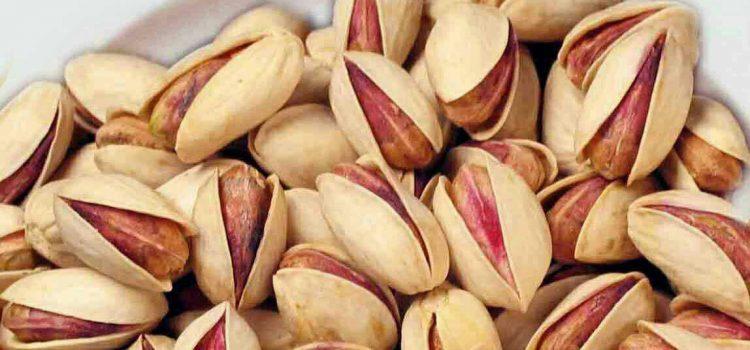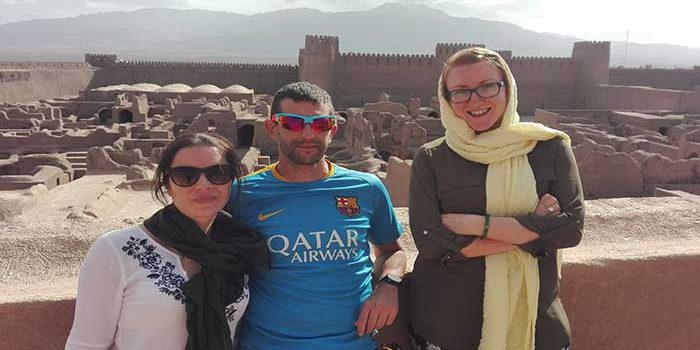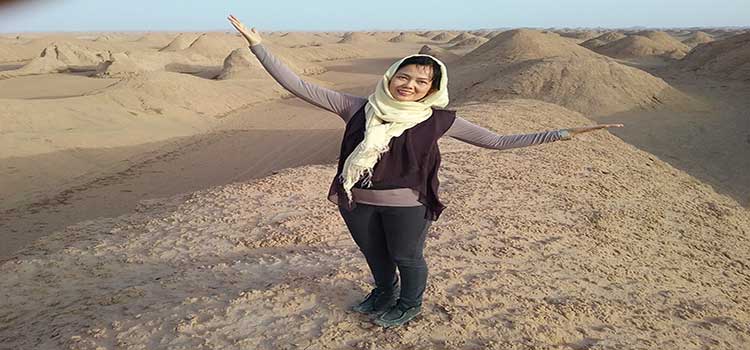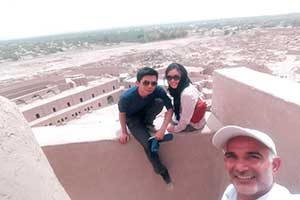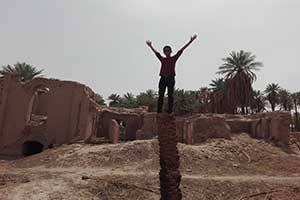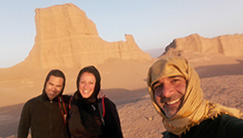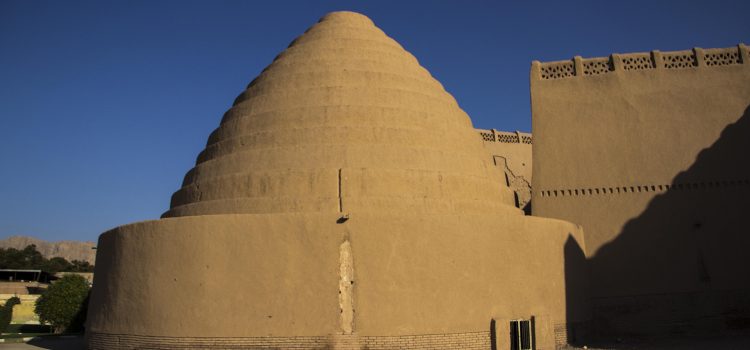Agriculture in Kerman area
Kerman is a surprising land when it comes to agriculture. To prove this, it is enough to know that the distance from the hottest spot on the earth (Lut Desert) to one of the coldest spots in Iran (Lalezar) is only 150 kilmeters less than two hours!!
Almost all types for corns grow in the area. South of Kerman (Jiroft, Kahnuj, Ghaleganj) produce a diversity of vegetables throughout the year. Every day, you can get fresh tomatoes, cucumber, egg plant, etc, in the market.
The agricultural products in Kerman area are dates, pistachio, oranges, water melons, melons, all types of vegetables, apples, quinces, peaches, grapes, pomegranates, apricots, almonds, figs, many types of nuts, walnuts, ceder, henna, garlic, cumin and many types of medicinal herbs.
Pistachio, dates, oranges and garlic are the main agricultural products that are exported to different parts of the world. However, best types of pistachios grow in Rafsanjan, dates in Bam, henna and garlic in Shahdad.
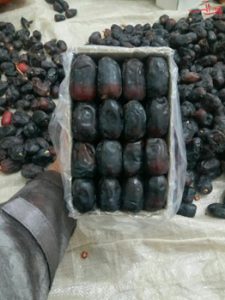
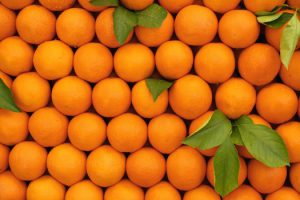
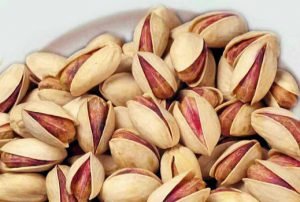
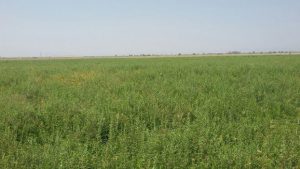
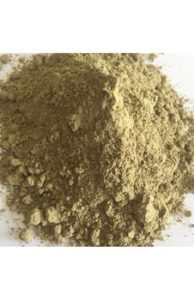
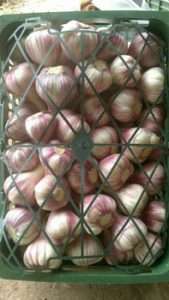
Spain, Ireland & Andora
Eva from Spain, Zita Irish and Tomas Andorran joined a tour to Kaluts, Rayen and Mahan. Unfortunately, Eva did not speak English and Tomas had to translate into Spanish. The chemistry teacher, Zita, had the chance of benefiting more from visiting Kaluts area because the forming elements are related to the science of chemistry. Eva quite cool, Zita smiling but Tomas super active. He knew no risk and run up the stiff rocky hills on the way to Rayen. He wanted to take pictures on top of hills from colorful mountains where he fell and damaged his only pants.
They ended the tour by eating dinner (Dolmeh, an Iranian traditional healthy dish, at a cozy traditional restaurant) in Kerman the second day.
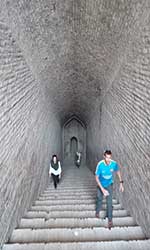
Wani a solo lady
The Thai lady chose Kerman her first destination to visit and ate her first meal in Shahdal, Lut Desert, right after her arrival in Iran on the same day. She got super excited when she entered the area of Kalouts. She did not know what to decide: to watch the landscape, to take photos or to record video clips. She was right because such an exploring such an amazing place involves at least 2 days time. However, Wani returned for the night to Kerman to visit Mahan, Rayen and Kerman the other day. When she was visiting the Zoroastrians towers of science, she said that in Tibet some people do the same with their dead bodies and leave them for the preying birds to eat the flesh. It was really interesting to hear about such a common thing between nations and cultures.
Wani, an easy going lady, was a physiotherapist, she did not like to climb heights or to walk on too many stairs. She enjoyed her favorite fun of riding a camel in Lut Desert.
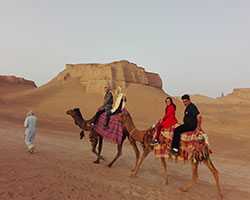
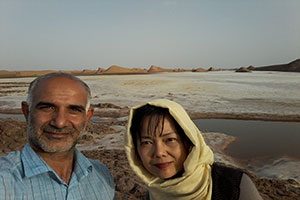
Marco and Maria
The amazing time with nice friendly Italian couple, Marco and Maria, is unforgettable. They loved the places and could not stop expressing their surprise. They were in short of time but they finally managed to see parts of the unique collection of Lut Desert in Kerman. Finally, their tour ended at night on the roofs of the beautiful pavilion of Fathabad garden near Kerman.
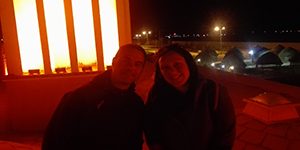
Ice house
IRANIAN ICE REPOSITORIES
One of the basic concerns of traditional architecture in Iran was to create safe living conditions for most people, bearing in mind the climatic features of each region. Ice repositories were public, so all people could use ice in Iran. The method of preserving ice in Iran was so professional yet simple that even poor people could afford it. There were plenty of Yakhchals (ice repositories); some of them were for private use. Nevertheless, the poor could also use the Yakhchal to cool water.

Sherbets and fruit were preserved with ice in all shops. Huge chunks of ice were carried by donkeys and sold all over the province. People could buy ice either in the bazaar or straight from Yakhchal building.
Most of the existing ice repositories are the remains of the Post-Safavid period. The most reliable documents about these buildings are the sketches of an explorer during the Safavid’s reign or after that. The ice house has conical dome with a great wall. Ice repositories in Iran were common in areas that had suitable condition for producing ice, which means the feasibility of water freezing during the cold nights. It was also prevalent in regions where ice could be obtained naturally. In cold areas, ice was collected from shadowed hillsides of the mountains and then it was transferred to the ice house to be kept till the hot seasons. Since in the southern parts of Iran the temperature rarely dropped below zero, there was no ice house there. In addition, at Caspian shores in the north of Iran, no ice house is seen, because of the humidity and low temperature fluctuation during day and night. On these shores, it is very scarce to go through freezing point and the temperature does not get cold enough to provide ice. But like other regions in Iran, people condensed snow at the time of precipitation, put them within the layers of wicker or
traw and had them buried underground to be used in summers.

ARCHITECTURAL ELEMENTS
The ice house principles are simple, but this simplicity is to meet such crucial requirements and that’s where Iranian ancestor’s sagacity clarifies. Ice house’s structure may seem simple at first glance but it can be onsidered a beneficial building, subtly resulting in convenience of the people around.
The structure of the Yakhchals generally consists of three main parts:
A great shading wall, the provision pool, and the ice reservoir, each of which will be introduced as follows:

The Shading Wall
The shading wall is a long and great wall located along each ice house
casting a long shadow on the shallows to its north.
Based on the fact that Iran is located in the northern hemisphere, the shading wall always stands to the south of the ice-makings in order to have the best position to spread shadow all over its surface. Therefore it stretches from the east to the west. The enormous height of this wall which comes up to nearly 10 m. height sometimes, prevents the sun’s radiation from shining on the frozen water in the front pond. In some examples, the shading walls curved to provide extra shading as well as making the air circulate on the area to increase cold.
The walls which connected these two created a curved shape plan and
provided a vaster site for the pools. This action also helped workers to
secure themselves in confronting with cold blasts, during the ice making
operation at cold winter nights and dawns. Sometimes there were some
hollowed arch shapes in the wall. It was not only to diminish the load on
the foundation, but to extricate it from being flat and boring. To add more
stability to the shading walls, some buttresses were added to the south of
the wall occasionally. In some desert areas, usually central parts of Iran,
several shading walls were erected, especially when their storage was
bigger, so they could afford much more ice.

The Provision Pool
To let water freeze needed some temporary shallow sluice. Although
providing water in such climate is not easy, the ingenious Persian people
did not give up such extraordinary process which is ice processing and
preserving it in such arid climate. Generally, water was procured from
water systems known as qanats (traditional local system for transferring
water) or some rivulets in the region or other sources and conducted to
some ponds located just north of the wall. Square in shape, the it
was approximately 10 m. with a depth of about 40-50 cm. They
dug it parallel to the great wall in order to get more shade. This pool was
used as the preparation place for ice during cold winter nights. Some times
in colder areas pool and the storage were the main parts of the ice house
and the shading wall was eliminated. Since cloudy sky in these regions
functioned as an insulation layer and no wall was needed anymore.
No special material was used to finish the channel surface. People draw
water into flat furrowed fields.They made high adobe or mud walls to keep the area shaded during the day. As a result at nights, its temperature is lower than its neighboring region and water can freeze more quickly. Coldness of winter takes the heat of water away at night, resulting in ice being formed and at dawn, people chop the ice into pieces and transfer it to the main structure of ice house which is the southern pitfall that is introduced in the following.
The Ice Reservoir
These reservoirs are usually located behind the shading wall and at its
south. One can access them through one or several entrances from the
northern part (the pool area). Non-conductors were essential in order to
keep and store ice for a long time in so doing. People preserve ice in an
underground well. Three kinds of wells were prevalent in Iran that will be
described as follows:
Vaulted Yakhchals
In north-eastern region and the central desert, people constructed a big
adobe vault above an almost great pit. It was somewhat cone shaped. The
dimensions of the pitfall were different. The diameter of the vault of some were 13 m. and the pit had a depth of 6 m. The pit was surrounded by a vault whose thickness diminishes from beneath to the top to provide more endurance and stability, so it weighs less and the gravity center located in a lower height. This point also reduced the construction costs as less material and labor forces were employed. They used stairs to help workers to cover the external crust of the vault with thatch to protect it from rain, snow, sun and atmospheric variations. They built smaller stairs between these stairs to make it possible for workers to ply. So people could maintain or repair them easily. In the head of summers especially in central regions, the sun heats the Yakhchal dome. This method was also employed in order to prevent the ice stored to melt during hot seasons. When the temperature augmented, just the upper air, trapped in the structure, got warm and the lower layers of it remained cool. These high vaults were regarded as the highest or one of the highest constructions in the villages. In addition, a well usually was considered beneath the main pit to let the
melted water poured into it because the melted water causes the ice melt
too.
In western and north-western regions of Iran, the weather was/is cooler
than in the desert. So fewer vaulted Yakhchals can be seen there and using
natural ice provided from shadowed foothills was common. Normally
Yakhchals had two entrances. One of them was between the freezing area and the pitfall. Another one was at the south of the ice house. The north door was utilized to transfer pieces of ices via a sloped surface to the pitfall in winters. The southern door was usually opened at summers in order to serve and sell ice. A stair case was built at the southern part of the pitfall for the person in charge to let him access the lower parts of the pit.
Underground Yakhchals
Another kind of Yakhchal was built in north-central and north-western
parts of Iran and its function was similar to the vaulted Yakhchals but its
physical appearance was different. Most parts of this kind of ice house lay
underground. Its thick wall was made of brick and spall with hydraulic mortar like lime, sand, cement and sarooj (which is a vernacular mortar out of clay, water and egg’s white part). Its roof was often of brick in the form of barrel vault or ribbed vault and it usually resembled a tunnel having frozen in ponds, the ice was then poured into Yakhchal through a valve beneath arches. Every time ice was poured, they sprinkled water on it to make it homogenous. In this kind of Yakhchal, ice layers were not covered with straw due to the region’s cold climate which made ice collecting an easy job even during summers. Ice was delivered through the southern door, which was connected to the pitfall through stairs.
Roofless Yakhchals
The third kind of Yakhchal, called “Roofless Yakhchals”, was without roof.
It was built in Isfahan. Like other kinds of ice repositories, this ice house was used up until 40-50 years ago. It consisted of just two main parts, the shading wall and the pools in front of it. In this method, the provision pools were considered as the storage place for the ice. The shading wall, with a height of 4 to 5m., had a length of 12m.
. First they broke it into smaller pieces, and then they poured water
on it to get a homogenous mass of ice. Afterward they would put wicker
or straw on it and next another layer of ice. Therefore, a layer of straw or
wicker was placed between the two layers of ice. As a result in summers
during the peak of sales, it would be easier to break the ice layers than
when it was stored in an entire pool. Moreover when they wanted to pick
up a layer of ice, the wicker beneath functioned as a non-conductor for the
rest of ice in the pool. Putting straw and wicker between layers of ice was
also common when using vaulted Yakhchal.
When the sales ended, people would cover the surface of ice with 1 to 2m.
of straw and gradually used it in hot weather. The capacity of this kind of
Yakhchal in Isfahan was so great that usually some ice would remain for the next year but unfortunately there is no such Yakhchal anymore.
THE OBSOLESCENCE OF ICE REPOSITORIES
Unfortunately almost none of these structures are under use anymore.
With propagation of common refrigerators and penetration of industry to
homes, ice repositories turned out to be some abandoned eyesores which
are unpleasant even to approach let alone to investigate. Some of fortunate
ones are restored in the city of Kerman and in the city of Orumie to satisfy the curious visitors investigating them.
The clients who order the Kerman city tour can visit at least two existing ice houses, Zarisf and Moayedi.

